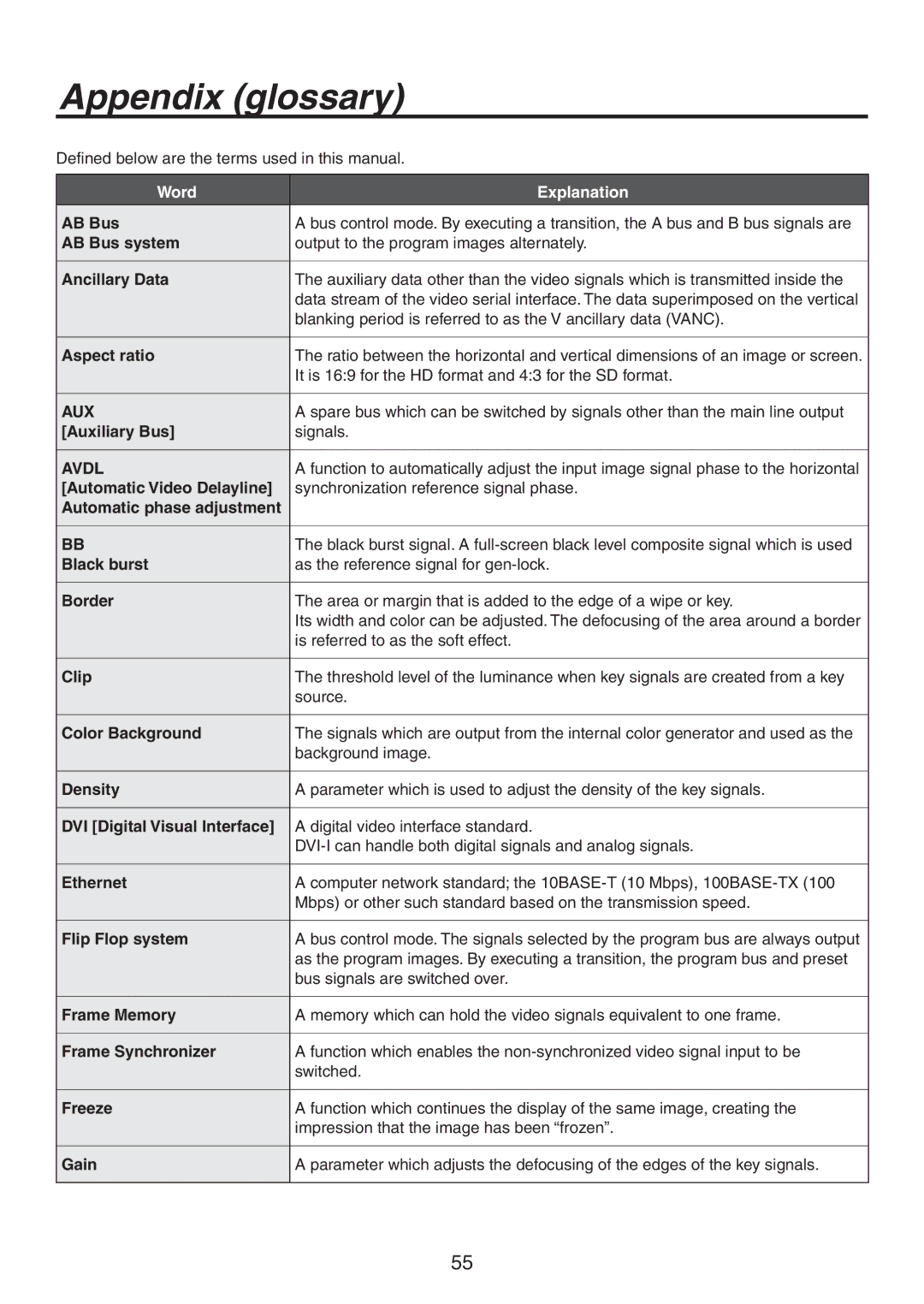
Appendix (glossary)
Defined below are the terms used in this manual.
Word | Explanation |
|
|
AB Bus | A bus control mode. By executing a transition, the A bus and B bus signals are |
AB Bus system | output to the program images alternately. |
|
|
Ancillary Data | The auxiliary data other than the video signals which is transmitted inside the |
| data stream of the video serial interface. The data superimposed on the vertical |
| blanking period is referred to as the V ancillary data (VANC). |
|
|
Aspect ratio | The ratio between the horizontal and vertical dimensions of an image or screen. |
| It is 16:9 for the HD format and 4:3 for the SD format. |
|
|
AUX | A spare bus which can be switched by signals other than the main line output |
[Auxiliary Bus] | signals. |
|
|
AVDL | A function to automatically adjust the input image signal phase to the horizontal |
[Automatic Video Delayline] | synchronization reference signal phase. |
Automatic phase adjustment |
|
|
|
BB | The black burst signal. A |
Black burst | as the reference signal for |
|
|
Border | The area or margin that is added to the edge of a wipe or key. |
| Its width and color can be adjusted. The defocusing of the area around a border |
| is referred to as the soft effect. |
|
|
Clip | The threshold level of the luminance when key signals are created from a key |
| source. |
|
|
Color Background | The signals which are output from the internal color generator and used as the |
| background image. |
|
|
Density | A parameter which is used to adjust the density of the key signals. |
|
|
DVI [Digital Visual Interface] | A digital video interface standard. |
| |
|
|
Ethernet | A computer network standard; the |
| Mbps) or other such standard based on the transmission speed. |
|
|
Flip Flop system | A bus control mode. The signals selected by the program bus are always output |
| as the program images. By executing a transition, the program bus and preset |
| bus signals are switched over. |
|
|
Frame Memory | A memory which can hold the video signals equivalent to one frame. |
|
|
Frame Synchronizer | A function which enables the |
| switched. |
|
|
Freeze | A function which continues the display of the same image, creating the |
| impression that the image has been “frozen”. |
|
|
Gain | A parameter which adjusts the defocusing of the edges of the key signals. |
|
|
55
